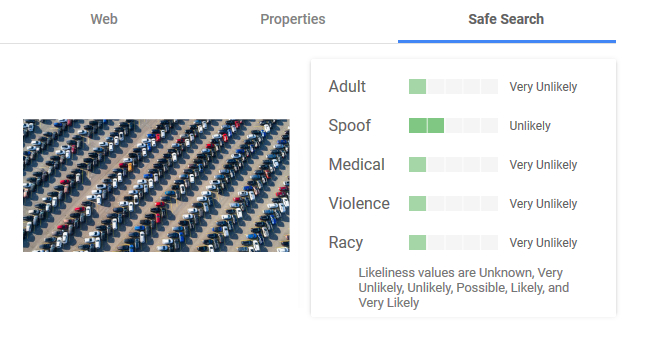While COVID-19 dominated almost every news headline, the local search world kept on keeping on last month. There was plenty of coverage for the ways in which the pandemic is impacting online listings, but the non-COVID updates and changes continued.
For all of our recommendations on how to best handle your Google listings during COVID-19, check out our dedicated series. For all other local search developments not specifically relating to coronavirus, keep reading.
Car dealerships can now have multiple listings
Confirmed by an update to the Google My Business (GMB) help centre, car dealers are now permitted to have a unique listing for each manufacturer they are authorised to sell. If a dealer sells Ford, Mazda, and Toyota, they would be allowed to have three listings for this—one per brand. It does not matter if they have separate entrances or staff.
This update is likely to allow more corporate control for an individual manufacturer’s listings, but the variance in quality between car dealer listings can be very wide. This is especially problematic for luxury brands such as Lexus or Jaguar, which want to keep a high level of production quality on all of their marketing efforts. Without relying on each authorised dealer having to maintain their own individual listings, brand managers at the corporate level can better provide a uniform and accurate experience for their listings around the world.

So, expect to see hundreds more GMB pages of car dealerships specific to each brand. These new listings will need to be managed by local optimisation experts as this will be new territory for many of these corporate-level brand managers. These new listings will need to be created, optimised, and managed—especially for luxury car brands, which will not settle for basic skeletal listings. Local optimisation experts will need to be called in for these luxury brands to keep their online listings at the same level as all their other marketing efforts.
A few other important notes:
- Car dealerships can also have another listing for the entire dealership. So you could see a listing for “Western Slope Auto” and then separate listings for Ford, Lincoln, and Toyota nested within “Western Slope Auto”.
- Car dealers can also have listings for their sales and parts departments. To qualify, they would generally need a separate entrance, different categories, and sometimes different hours.
- These rules do not apply to “used” car dealers
- These rules do not apply to other industries, such as insurance agents who may sell multiple brands of insurance.
GMB will review all photos and videos before publication
As of mid-March, photos and videos submitted by both users and business owners will be reviewed before publication. A mandatory review has never been implemented by Google prior to this time, so it is highly likely that there will be a noticeable delay between upload and publication which did not exist before.
In late February, many business’s photo uploads to both their GMB pages and Google Posts were being rejected en masse. This was thought to be due to the new photo review process being overzealous. Google has hesitations around allowing stock photography, and the assumption had been that Google outright banned the use of such images. Following the reports of rejected photos, however, Google confirmed the rejection of photos during that time was a bug and not due to stock images.
The primary reason for this new review process is likely to prevent spam. A very easy way to deface a business’s GMB profile is to upload inappropriate or inaccurate images onto their profile. Coordinated attacks can even see the image used within a business’s knowledge panel become whatever spam the nefarious user has uploaded. The new upload review policy should have the ability to halt these malicious attacks.

Google has been vague whether the review process was to be done manually or automatically through an AI. They have stated that a mixture of both has been implemented but provided no details.
Also, remember you can run photos through Google’s Vision AI to see if they are being flagged as inappropriate for an unforeseen reason. The Vision AI product provides information on what Google’s machines believe the contents of an image are, including the likelihood of the content containing an image disallowed by their algorithms.
GMB optimisation considered the most valuable local marketing service
In what should be a surprise to almost nobody in the online marketing space, a survey of 475 local marketing businesses concluded that GMB optimisation is by far the most valuable service a local marketer can provide. Factors which were taken into consideration included how much the business itself valued their different optimisation methods given their pricing, salaries of experts, and ROI for their clients.
According to the survey, the top five most valuable services are:
- Google My Business optimisation
- On-site optimisation
- Reputation management
- Citation management
- Website design
GMB optimisation is also the most frequently offered service or the sole service offered by companies if they have limited resources. This is a clear indication of priorities and what is most beneficial to clients. This is a change in trends from previous years where marketers focused less on GMB specifically and offered more traditional SEO. The value of optimising a business’s own website or other consumer touch points has gone down as GMB becomes more useful to users and used more ubiquitously.
Link building is one of the less frequently offered services, with only half of local marketers offering it. Citations are also becoming a decreasingly valuable and less differentiated service from marketers. Citation quality is significantly more important than citation quantity, making a large citation network a poor selling point for local marketers.
Google now showing “Specialists” tab in the Healthcare Knowledge Graph on mobile
There is an important search engine results page (SERP) update that could greatly increase the volume to medical listings on GMB. One in 20 Google searches are health-related, and Google knows it has a responsibility to serve the most accurate medical information for these 170 million-plus daily searches. With this in mind Google, has for years been working on its “Healthcare Knowledge Graph”. This includes an overview, symptoms, treatments, and is now introducing “Specialists”. It is more important than ever to ensure that medical facilities are listing their doctors so they can be eligible to show in Maps for these specialists-type searches.
A lot of patients don’t know what type of doctor they should seek for certain medical conditions. This update to Google’s health condition cards will help provide that direction, and will essentially close the loop on the digital patient journey. With this feature only appearing on mobile search results so far, it will be important to keep an eye on these condition cards as this could just be something Google is testing. Down the road, perhaps they’ll even incorporate a mechanism for scheduling appointments directly within these cards.
It is both very fortunate and very unfortunate this update was released during the COVID-19 outbreak. It is a better user experience for the flood of extra users making medical searches, but it is going to increase the number of hits for medical professionals that are already overburdened. Given this is a new feature, healthcare businesses may not be familiar with how to optimise or utilise this new user touch point.




